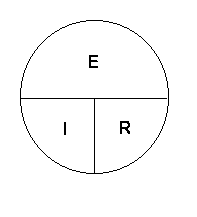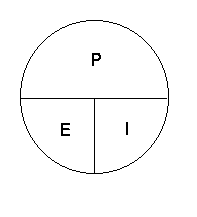| BASIC
ELECTRONICS THEORY Now comes the hard part, if any part of this is hard. Basic electronics, including a little bit on physics and circuits. First, let's get a few concepts straightened out. Electricity is a flow of energy through the transfer of electrons, which are fundamental particles found in all atoms. I'll bet you know a little bit about magnets, likes repel and opposites attract. A similar concept is applied in the basic electrical circuit. Atoms contain protons, which are positive, and electrons, which are negative. The "powerplant" of a basic circuit can be represented most simply by a battery, which will have both a positive pole and a negative pole. Conductive material will form the path that electrons take to get from the negative side back to the positive side. And remember this: the flow will always be from negative to positive. Along the path, electrons will jump from one atom to the next in the positive direction. That's electricity! And in that path, you might find a load - some outlet for that energy to be applied to. This could be a light bulb, an electrical motor, or for the purpose of radios, a transistor. A circuit (like a "circle") is a loop that is unbroken. Sure, it may have many different components in the path, and that path may branch off in several different directions, but in order for a circuit to operate - a complete pathway must exist. Ohm's Law To understand Ohm's Law, we have to understand these terms:
The three basic characteristics that are at play in a circuit are voltage, current, and resistance. The best way to describe their relationship is by using the textbook anecdote of water flow. As water moves through a pipe, the rate of flow can be measured by how much water travels past any given point along that pipe per a certain period of time. That represents the current. The pressure controls the flow through the pipe, and as the water pressure increases, so will the rate of flow. That pressure represents voltage. Finally, if the pipe is constricted at some point, flow will slow down and the pressure will build up. This is the resistance. Can you see how these factors affect each other? Voltage is directly affected by resistance and flow (current). That is the mathematical relationship expressed by Ohm's Law, a principle which is applied to almost every electrical circuit. The equation is written as follows: E = I x R Conversely, if you try to solve for the I or R term in this equation, you will have to divide E by the remaining term. For a better visual understanding, memorize the "Magic Circle" of Ohm's Law:
POWER
Power, in electronics terms, is the end result of the voltage as it has passed through a circuit and the work that it performed. Since power is directly affected by both voltage and current, then the amount of resistance in the circuit will also affect power. The relationship of power to voltage and current reflects Ohm's Law; use the magic power circle likewise:
SOME IMPORTANT FACTS TO KNOW FOR THE EXAM: The average automobile battery supplies 12 volts, while a standard U.S. wall outlet supplies about 120 volts. Voltage is measured using a voltmeter, current is measured using an ammeter, and resistance is measured using an ohmmeter. All three properties can be measured using a multi-meter.
|


